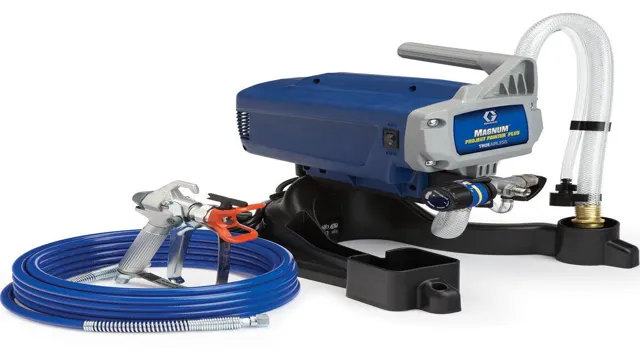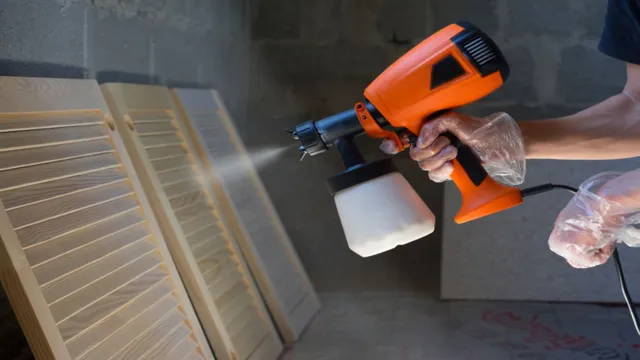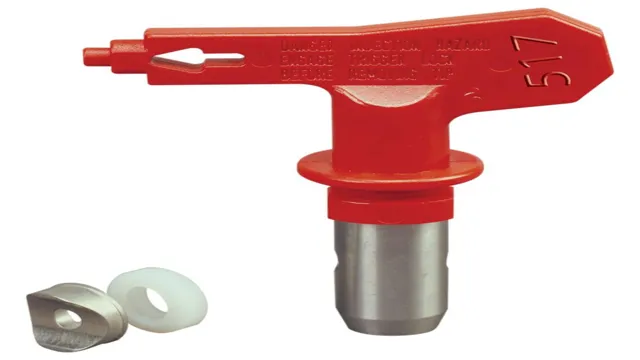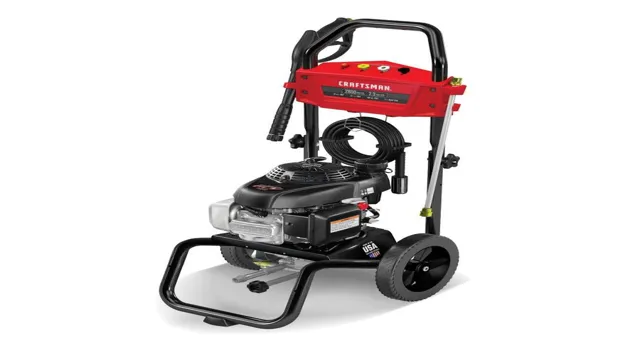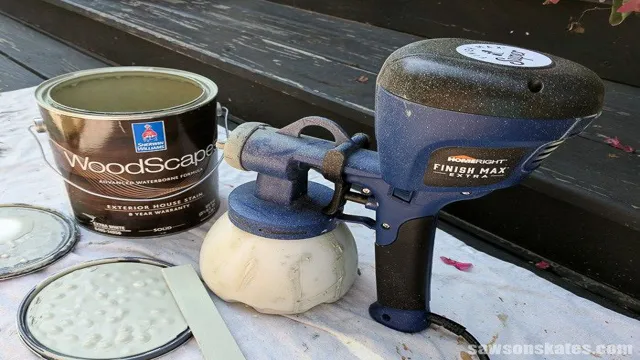Do I Need an Air Compressor for Paint Sprayer? Find Out If it’s Essential
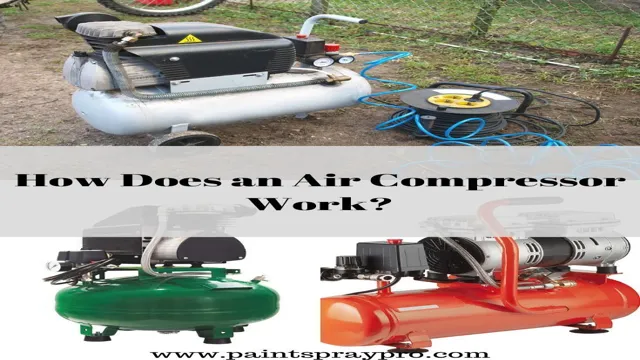
If you’re planning to tackle a DIY painting project, you may be wondering whether you need an air compressor to use a paint sprayer. Well, the short answer is that it depends on the type of paint sprayer you have. While some paint sprayers require an air compressor to work, others are designed to be used without one.
But which one is right for your project? Paint sprayers that require an air compressor are often called “conventional” or “air-powered” sprayers. These sprayers use compressed air to atomize the paint and create a fine mist that can be evenly applied to surfaces. While they offer precision and speed, they can also be quite noisy and require a larger investment upfront.
On the other hand, there are paint sprayers that are powered by electricity and do not require an air compressor. These “airless” sprayers use a high-pressure pump to force the paint out of the spray gun, allowing the paint to be applied without the need for compressed air. They may be less precise than air-powered sprayers, but they’re quieter and generally more affordable.
Ultimately, whether you need an air compressor for your paint sprayer will depend on the specific project you’re working on. If you’re looking for precision and speed, an air-powered sprayer may be the way to go. But if you value a quiet and affordable option that can get the job done without needing to purchase additional equipment, an airless sprayer may be the better choice.
What is a Paint Sprayer?
“Do I need an air compressor for paint sprayer?” is a common question among DIY enthusiasts who want to give their home a quick facelift. A paint sprayer is a tool that uses compressed air to atomize and spray paint onto a surface, creating a smooth finish. While some paint sprayers do require an air compressor, not all models do.
Airless paint sprayers, for example, do not utilize an air compressor but instead use a high-pressure piston pump to force paint through a nozzle. However, if you have opted for a spray gun that requires an air compressor, keep in mind that the compressor’s size and output rating determine the type of spray gun that you can use. A larger air compressor with at least a 20-gallon tank and a rating of 5 CFM (cubic feet per minute) is ideal for most spray guns.
So, the answer to whether you need an air compressor for a paint sprayer ultimately depends on the type of paint sprayer you choose and its specifications.
Definition of Paint Sprayer
A paint sprayer is a device that sprays a liquid material, such as paint or stain, onto a surface. It works by compressing the material and then forcing it through a nozzle that atomizes the liquid into tiny droplets that evenly coat the surface. Paint sprayers come in various types and sizes, including airless sprayers, HVLP (High-Volume Low-Pressure) sprayers, and compressed air sprayers.
They are commonly used in the automotive industry, construction, and DIY projects to achieve a smooth finish and save time compared to traditional paint application techniques. Using a paint sprayer may seem intimidating at first, but with proper preparation and technique, it can be a game-changer in your painting projects.
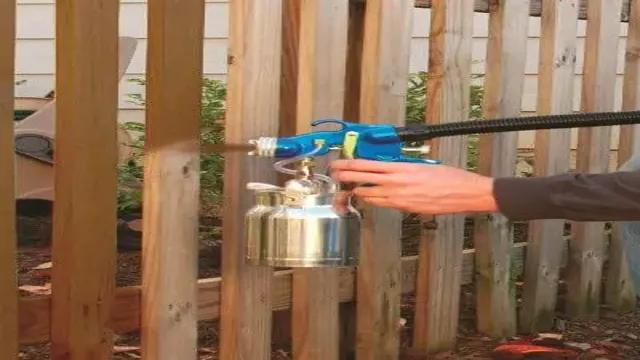
Types of Paint Sprayers
A paint sprayer is a device used to apply paint or other coatings onto a surface quickly and efficiently. It atomizes the paint into tiny particles and discharges it through a spray nozzle onto the surface being coated. There are three main types of paint sprayers: airless sprayers, HVLP (high volume low-pressure) sprayers, and compressed air sprayers.
Each of these types has its unique features and benefits. Airless sprayers apply paint using high pressure, making them ideal for large projects that require a lot of coverage quickly. HVLP sprayers, on the other hand, use less pressure and produce a finer mist, making them perfect for smaller projects that require precision and detail work.
Compressed air sprayers use compressed air to atomize paint and apply a thin, even coat. It’s important to choose a paint sprayer that best suits your project’s needs to ensure the best possible results.
How Does a Paint Sprayer Work?
If you’re looking to paint your home or furniture, investing in a paint sprayer can make the job a lot easier and faster. However, one common question among DIYers is whether they need an air compressor for their paint sprayer. The answer depends on the type of paint sprayer you are using.
Airless paint sprayers do not require an air compressor as they already have a built-in motor that pumps the paint out. On the other hand, HVLP paint sprayers require an air compressor to atomize the paint particles and create a fine mist for even application. It’s important to check the specifications of your paint sprayer to see if it requires an air compressor before making a purchase.
Keep in mind that HVLP paint sprayers often have higher upfront costs due to the additional equipment needed, but they can provide a smoother and more professional-looking finish. Ultimately, the choice depends on your budget and painting needs.
Working Principle of Paint Sprayer
A paint sprayer is a highly-effective painting tool that works by utilizing air pressure to apply a uniform coating of paint or stain to a surface. The device is composed of three main components: the fluid reservoir, the high-pressure pump, and the spray gun. Firstly, the paint is loaded into the fluid reservoir.
Once the machine is turned on, the high-pressure pump forces the paint through a small opening, generating a high-velocity stream. This stream of paint then passes through the spray gun’s nozzle and is released onto the surface being painted as a fine mist. The strength of the air pressure and the size of the nozzle can be modified to adjust the thickness of the paint layer and the coverage area.
The paint sprayer’s key advantage is that it allows you to easily cover large surface areas with even, consistent, and high-quality coverage. Whether you’re painting walls, cabinets, or furniture, using a paint sprayer saves you time and effort, ultimately providing a more efficient way of painting.
Do You Need an Air Compressor for a Paint Sprayer?
If you’re trying to decide whether you need an air compressor for a paint sprayer, the answer depends on the type of paint sprayer you have. Airless paint sprayers, for example, don’t require an air compressor. Instead, they use a high-pressure pump to force paint through a nozzle, producing an even, consistent spray.
However, if you have a conventional paint sprayer, which relies on compressed air to atomize the paint before it’s sprayed, then yes, you will need an air compressor. An air compressor is essentially the engine that powers the paint sprayer, generating the air pressure needed to create a fine mist of paint. It’s important to choose the right air compressor for your paint sprayer, as different sprayers require different pressure levels and flow rates.
So, do your research and make sure you have all the necessary equipment before beginning your painting project.
Factors to Consider
When it comes to using a paint sprayer, many people wonder whether they need an air compressor. The answer depends on the type of paint sprayer you are using and the job you are doing. Airless paint sprayers, for example, do not require an air compressor as they use high pressure to atomize the paint.
However, if you are using a conventional spray gun or HVLP (high-volume, low-pressure) sprayer, then an air compressor is necessary to provide the air pressure needed for atomization. Factors to consider when deciding whether to use an air compressor include the size of the paint job, the type of paint being used, and the level of control and precision needed. In general, an air compressor is recommended for larger projects or when working with thick or viscous paints.
Ultimately, the decision to use an air compressor will depend on your specific painting needs and preferences.
Benefits of Using an Air Compressor
Air compressor, paint sprayer As a DIY enthusiast or a professional, you might consider investing in an air compressor for various tasks. One of the common questions that arise is whether you need an air compressor for a paint sprayer. The answer is a resounding yes! An air compressor provides the power needed to atomize paint into tiny particles that are evenly sprayed out of the nozzle.
This results in a smooth, flawless paint finish with an even coat. Without an air compressor, you may face challenges like uneven application, overspray, or clogging. With an air compressor, you have greater control over the paint flow and a larger selection of paint finishes to choose from.
The best air compressor for your paint sprayer depends on factors such as your compressor’s CFM and PSI ratings, the project size, and the type of paint you use. Invest in a high-quality air compressor today and enjoy a smooth, perfect paint finish for all your projects.
Pros and Cons of Using an Air Compressor
If you’re considering using a paint sprayer for your next home DIY project, you may be wondering if an air compressor is necessary. While it’s not a requirement, using an air compressor with your paint sprayer can provide some great benefits. One of the biggest pros is that it allows for a smoother and more even application of the paint.
Additionally, using an air compressor can save you time and money by allowing you to paint larger surfaces more quickly, and it’s more efficient in terms of paint usage. However, there are also some cons to using an air compressor, such as the noise it can create and the need for extra space to store the compressor itself. Ultimately, whether or not you need an air compressor for your paint sprayer will depend on your personal preferences and the scope of your project.
If you’re looking to achieve a professional-grade finish on a large surface area, it may be worth considering investing in an air compressor.
Conclusion
In conclusion, whether or not you need an air compressor for your paint sprayer ultimately depends on your specific needs and preferences. If you’re looking for maximum power and efficiency, then investing in an air compressor is the way to go. However, if you’re a casual DIYer or simply want a more affordable option, a compressorless paint sprayer may be the better choice.
As with any tool, it’s important to consider your budget, the complexity of your project, and your skill level before making a decision. Remember, painting is an art form – choose the right tools to make your masterpiece shine!”
FAQs
What type of air compressor is recommended for a paint sprayer?
It is recommended to use an air compressor with at least a 2.5 gallon tank and a 2.0 to 3.0 CFM rating for most paint sprayers.
Is an air compressor required for all paint sprayers?
No, not all paint sprayers require an air compressor. Some newer models use airless technology and do not need a compressor.
Can I use any air compressor with a paint sprayer?
No, it is important to use a compressor with the correct specifications for your paint sprayer to ensure optimal performance.
How do I know if my air compressor can handle a paint sprayer?
Check the CFM (cubic feet per minute) rating of your compressor and compare it to the CFM requirements of your paint sprayer. If the CFM rating is at least as high as the requirement, it should work.
What is the benefit of using an air compressor with a paint sprayer?
An air compressor can provide constant airflow, which allows for a smoother, more even application of paint.
Do I need to use a specific type of oil in my air compressor for painting?
Yes, it is recommended to use a non-detergent oil specifically designed for air compressors to prevent contamination of the paint.
Can I use a smaller air compressor for smaller paint jobs?
Yes, for smaller paint jobs you may be able to use a smaller air compressor with a lower CFM rating, as long as it meets the requirements of your paint sprayer.

